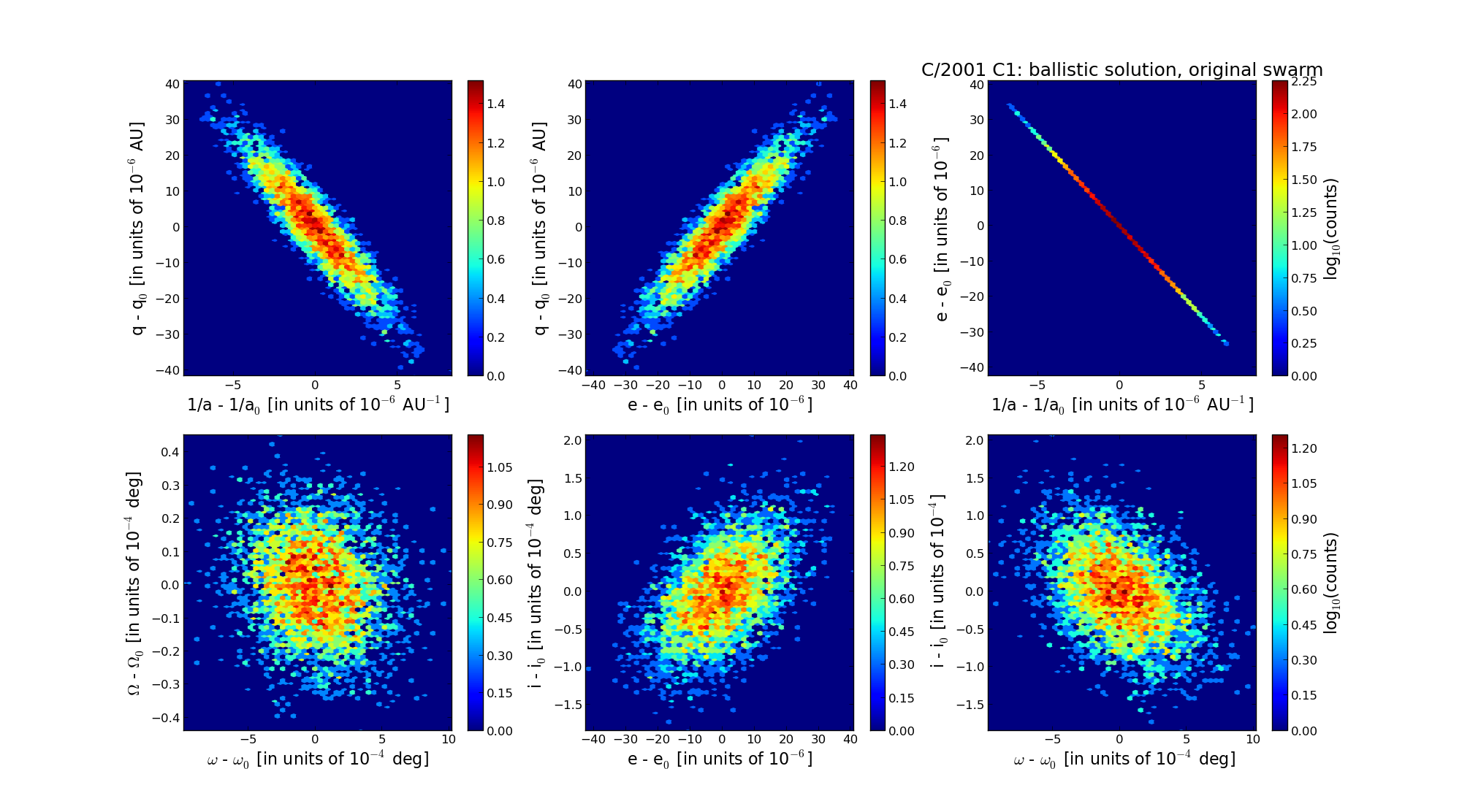| Solar System Dynamics & Planetology Group |
 |
C/2001 C1 LINEAR |  |
| Solar System Dynamics & Planetology Group |
 |
C/2001 C1 LINEAR |  |
| number of observations | 223 |
| number of residuals | 436 |
| data interval | 2000 Apr. 29 — 2002 July 3 |
| rms [arcsec] | 0.67 |
| orbit quality class | 1a |
| Epoch (TT) | 20020327.0 | = JD 2452360.5 |
| time of perihelion passage (TT) | 20020328.292956 | ± 0.002413 |
| perihelion distance | 5.10462770 | ± 0.00001150 |
| eccentricity | 0.99991178 | ± 0.00001068 |
| argument of perihelion [deg] | 219.936408 | ± 0.000274 |
| longitude of the ascending node [deg] | 33.711279 | ± 0.000013 |
| inclination [deg] | 68.951920 | ± 0.000050 |
| inverse semimajor axis [10-6 au-1] | 17.28 | ± 2.09 |

| Epoch (TT) | 16960906 | |
| time of perihelion passage (TT) | 20020328.801115 | ± 0.002426 |
| perihelion distance | 5.11002022 | ± 0.00001152 |
| eccentricity | 0.99991858 | ± 0.00001070 |
| argument of perihelion [deg] | 219.952566 | ± 0.000276 |
| longitude of the ascending node [deg] | 33.760054 | ± 0.000013 |
| inclination [deg] | 68.910831 | ± 0.000050 |
| inverse semimajor axis [10-6 au-1] | 15.93 | ± 2.09 |
| Epoch (TT) | 23050118 | |
| time of perihelion passage (TT) | 20020328.849382 | ± 0.002426 |
| perihelion distance | 5.10851053 | ± 0.00001163 |
| eccentricity | 1.00109569 | ± 0.00001070 |
| argument of perihelion [deg] | 220.006765 | ± 0.000276 |
| longitude of the ascending node [deg] | 33.711913 | ± 0.000013 |
| inclination [deg] | 68.913424 | ± 0.000050 |
| inverse semimajor axis [10-6 au-1] | -214.48 | ± 2.09 |